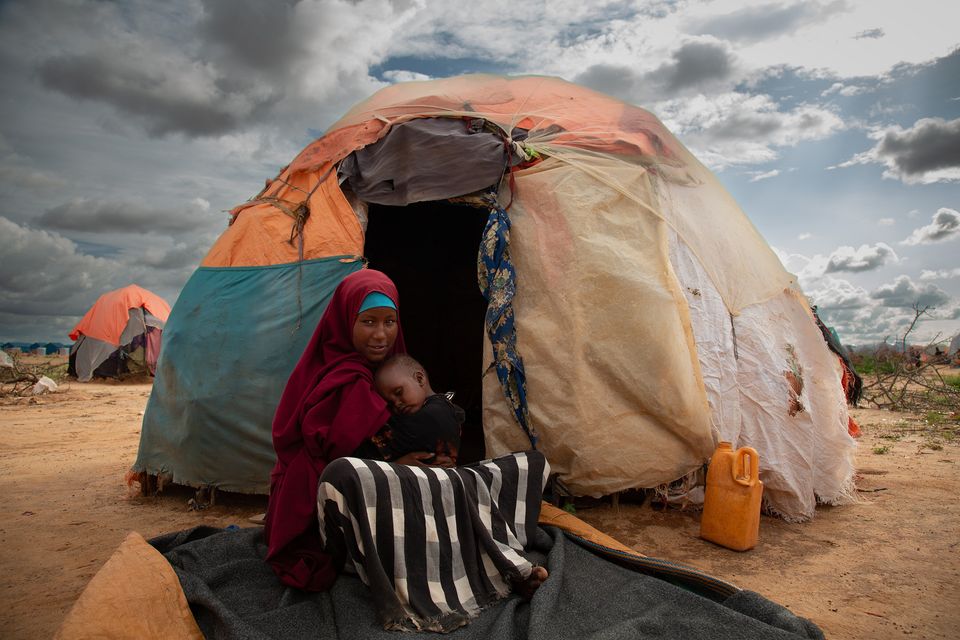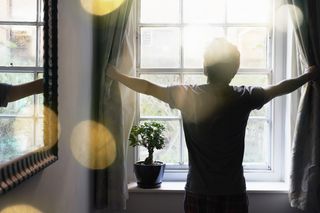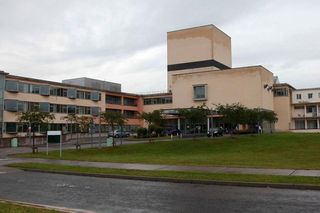‘We don’t think about eating or sleeping, we can only survive’ – Somali population devastated by flooding
After six years plagued by drought, Somalis prayed for rain. When it came, it threw families into another crisis, writes Amy Molloy in Dollow
'We don't think about eating or sleeping, we can only survive' – Somali population devastated by flooding
In a crowded camp on Somalia’s border with Ethiopia, a partially blind woman has just arrived after travelling 15 days on foot. She left her home in a desperate search for food and water for her eight children. Now there are just seven.
Nahma Shurari Farah (35) had to bury the body of her eight-year-old son Mohamed on the side of the road while making her way to Ladan camp in Dollow, a settlement established for people who have been forced by drought and conflict to flee their homes. Her family had not eaten in weeks.
“He died from hunger,” she says. “I’m now relying on God and humanitarian help to protect the rest of my children.”
After an unprecedented six failed rainy seasons, Somalis had prayed for the end of a drought that killed crops, animals and thousands of people. When the rain finally came, it also caused devastation.
Those living in Ladan now fear being washed away after once-in-a-century flooding hit the country in recent weeks.
About one million people have been displaced. Doctors fear a major spike in water-borne diseases such as cholera, and climate experts are warning that the crisis is likely to get worse.
Unicef says the humanitarian situation is extremely worrying. An estimated eight million people — including five million children — are in need of aid.
The Unicef-supported Ladan camp was set up in November 2021, and there are already more than 21,000 people living there, many of them women and children.
Fatuma Ali Abshir (19), a mother of two, was forced to flee her home in Dinsoor in the southwestern Bay region because of the threat of the Islamic militant group Al-Shabaab.
Mother-of-two Fatuma Ali Abshir (19) had to flee her home in Dinsoor because of the threat of the Islamic militant group Al-Shabaab. Photo: Johnny Brew
She had to move for a second time after her makeshift home was damaged by the recent floods when the Jubba river burst its banks.
“I’m concerned every day as it [extreme weather events] is happening frequently now,” she says. “My biggest fear is to be swept away when we least expect it. I’m worried it will sweep away my shelter and my kids.”
Young mothers in another camp nearby describe how they were asleep in their tents when water came rushing in.
Ilama Hussein Nuw (20), who lives in the Qansaxley camp for internally displaced people (IDP), told how she was worried the water was going to drown her and her eight-month-old son. “I was very scared,” she says. “It was all so sudden.”
There are up to 70,000 people in Qansaxley. Some moved there after being forced to give up their nomadic lives when Somalia was ravaged by famine in 2011. Nasro Mahamud (37) thought the camp would be a temporary home, but she has been there for 10 years.
In that time, she has lost two children. One died from cholera; the other was severely malnourished. “It makes me really sad when I think about it,” she says.
Before Somalia was hit by floods in October, the country was already dealing with a rise in cholera cases. By the end of August, 12,902 cases of acute watery diarrhoea/cholera had been reported since the start of the year. Compared with the same period last year, that represents an increase of 25pc.
There are more than 2,000 IDP camps across the country, and some of them have health and stabilisation centres, where mothers can take children for treatment. They also receive vital vaccinations and Plumpy Nut, a peanut-based paste used to treat severe acute malnutrition.
Staff in the centres say they are expecting to see a spike in illnesses in the coming weeks after many children in the camps drank dirty flood water.
While aid agencies such as Unicef provide assistance across Somalia, certain parts of the country have become no-go areas.
Audrey Crawford, an Irish aid worker who is country director with the Danish Refugee Council in Somalia, said humanitarian agencies were forced to leave Al-Shabaab-controlled areas after attempted attacks. The group, which previously controlled much of southern Somalia, has been known to punish people for attempting to escape Shabaab territory.
“Being able to get assistance to people in those areas is quite complex,” Crawford says.
Actor Stephen Rea witnesses tragedy of climate change in Somalia
Read more
The Al-Qa’ida-linked terror group is feuding with the government and has carried out a series of bombings and shootings on hotels in the capital, Mogadishu. On October 14, 2017, two truck bombings took place, killing at least 587 people and injuring 316 others.
The intended target is believed to have been a secure compound housing international agencies and troops. It is considered the country’s deadliest terrorist attack.
Crawford, who is from Dublin, said aid workers have to abide by strict safety protocols including a 5pm curfew. They are usually escorted by armed convoys. “There has been a big attempt to push Al-Shabaab out, but that also means collateral damage as more people are being displaced,” she says.
The effects of displacement can be seen in Banadir Hospital in Mogadishu, which is dedicated to providing medical services to mothers and children at no cost. Many of the mothers in the hospital have travelled hundreds of kilometres to get there.
It is Somalia’s largest paediatric stabilisation centre and treats some of the country’s sickest children. Some are suffering from severe malnutrition with underlying conditions.
As a result of the conflict and repeated humanitarian crises, nearly five million children between five and 17 are out of school. An estimated 3.5 million require emergency child protection services, and education access is limited, especially for newly displaced children.
Yet in the Unicef-supported Kabasa primary school near Dollow, children speak of their hopes of becoming engineers, teachers and doctors.
The school has 996 students including 470 boys and 526 girls. It epitomises the resilience of Somalis. Local mothers come together to help cook meals for the students at lunchtime. Nearly 1,000 students make it to school every day despite enduring significant hardship.
Jama Robow, a 16-year-old student, said his favourite subject is English.
“One day I want to come back as a teacher so I can teach others,” he said. “I want to help others learn. I want others to have a future.”
For more information, please visit Unicef.ie


















